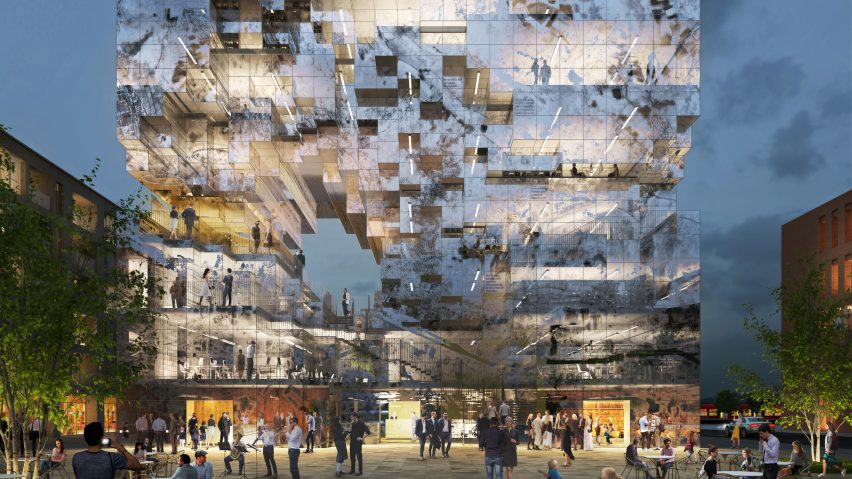Dutch firm MVRDV has unveiled plans for an office block with an interactive mirrored facade in the city of Esslingen in southern Germany.
Dubbed the "crystal rock" by the Rotterdam architecture firm, the facade of the Milestone building will be formed from fritted glass containing photovoltaic cells that will reflect back images of the city and its surrounding landscape.
Extruded and indented blocks on the square grid of the facade will give the building a 3D profile that the architects describe as a "pixelated map".
Passersby will be able to use their phones to interact with the facade, which will be printed with QR codes that reveal information about the city.
"Each pixel carries different information, featuring the stories of the city and its inhabitants. Accompanied by a smartphone app one can discover its richness, creating the public library of the town," MVRDV explained.
A gap through the middle of the building will frame a view of the rest of the city, while outdoor stairs and terraces will give those who work inside it a chance to enjoy the views too.
At ground level the new block will open out on to a public square and house a restaurant, cafe and meeting areas. Offices will be located on the floors above, and in total the Milestone will contain 6,500 square metres of floorspace.
Together with German developer RVI, MVRDV planned the Milestone, also known as Block E, as the centre of a new district on the site of a former freight depot that will eventually include housing, retail and a university. The architects hope the Milestone will serve as a "beacon" for residents.
The blocky outline of the proposed building is similar to another MVRDV project planned for Russia. Named the Silhouette, the Moscow tower block will have a red ceramic facade and will stand as a "symbolic gateway" to the city.
The Dutch firm, which was founded by Van Rijs, Winy Maas and Nathalie de Vries, made ripples recently with their eye-catching public library in the Chinese city of Tianjin.
Shaped like a giant eyeball, the library featured wraparound contour shelves, although due to time constraints the local team had to abandon planned access rooms, leaving the top-most shelves unreachable. Improvising, the shelves were replaced by aluminium panels printed to look like books.

